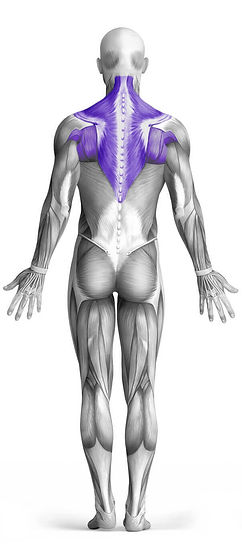Lever Unilateral Row 101 Video Tutorial
0

Exercise Synopsis
Target Muscle Group
Upper Back
Execution
Compound
Force Type
Pull
Required Equipment
Leverage Machine
Fitness Level
Advanced
Variations
Alternatives
Timer
Hour
Minute
Second
Stopwatch
00:00:00:00
Overview
The Lever Unilateral Row is an effective exercise for targeting the upper back, specifically engaging the Lats, Traps, and Biceps. Performed using a leverage machine, this exercise allows for a controlled, unilateral movement that isolates one side of the back at a time, helping to improve muscle imbalances. By pulling the weight towards your body, the exercise also activates the upper-back muscles, promoting better posture and strength. The Lever Unilateral Row is a great addition to back workouts for building muscle and enhancing overall back development.
How to Perform
Position yourself in front of a fixed lever machine, ensuring your feet are shoulder-width apart for stability.
Grab the handle with one hand, keeping your arm extended and your shoulder in a neutral, relaxed position.
Initiate the movement by pulling the handle toward your torso, bending your elbow, and consciously squeezing your shoulder blades together to engage the upper back muscles.
Hold the contraction at the peak of the movement for a brief moment to maximize muscle activation.
Gradually reverse the motion, allowing the handle to return to the starting position with controlled movement.
Complete the desired number of repetitions on one side, then switch to the other arm to perform the same steps.
★ Bonus: For exercises that involve external weights (such as dumbbells, barbells, or machines), the One Rep Max (1RM) calculator can help you estimate your maximum lifting capacity. Use it to track your strength progress and adjust your training for optimal results.
Tips
Prioritize maintaining proper form and technique to ensure that you effectively target the desired muscles.
Keep your core engaged and your posture stable throughout the entire movement.
Begin with a lighter weight to ensure correct form, and gradually increase the load as your strength improves.
Focus on executing the movement slowly and with control, avoiding rushing through the exercise.
Pay attention to your breathing by exhaling as you pull the handle toward you and inhaling as you return it to the starting position.
To add variety and challenge, consider experimenting with different grip variations or incorporating resistance bands.
Adjust the lever machine to fit your height and range of motion, ensuring proper alignment during the exercise.
Be mindful of how your body feels and make adjustments to the weight or your form if you experience any discomfort or pain.
Include this exercise as part of a comprehensive workout routine to promote balanced development of your upper body muscles.
If possible, seek advice from a fitness expert to assess your technique and receive tailored recommendations for improvement.
How Not to Perform
Avoid Using Momentum: Do not jerk or swing your body to pull the lever. This can lead to wasted energy and ineffective targeting of the muscles. Focus on controlled, smooth movement.
Don’t Overextend Your Arm: Keep your arm straight but not locked at the elbow when starting. Overextending can put unnecessary stress on your joints and reduce muscle engagement.
Don’t Arch Your Back: Maintain a neutral spine and avoid leaning back or arching your back during the pull. This can lead to strain in your lower back. Keep your torso stable.
Avoid Shrugging Your Shoulders: Keep your shoulders relaxed and avoid shrugging them up toward your ears. Focus on pulling with your back muscles, not your traps or shoulders.
Don’t Rush the Movement: Perform the exercise at a steady pace, both during the pull and the release. Rushing the movement can reduce muscle activation and increase the risk of injury.
Avoid Using Too Much Weight: Don’t use excessive weight that forces you to compromise your form. Choose a weight that allows you to maintain control and proper technique throughout the set.
Don’t Let Your Elbow Fling Out: Keep your elbow close to your body as you pull the lever. Letting your elbow move out to the side can shift focus away from the upper back and reduce muscle engagement.
Avoid Holding Your Breath: Make sure to breathe properly during the movement. Holding your breath can increase internal pressure and decrease your performance. Exhale as you pull, and inhale as you return.
Don’t Skip the Warm-Up: Failing to warm up can lead to muscle strain or injury. Warm up your upper body with dynamic stretches or light weights before performing the exercise.
Avoid Uneven Movements: Don’t allow your torso to twist or shift to the side while pulling. This can put unnecessary strain on your spine and reduce the focus on the target muscles.
Variations
Variations of fitness exercises refer to different ways of performing a specific exercise or movement to target various muscle groups, intensities, or goals. These variations aim to challenge the body differently, prevent plateaus, and cater to individuals with varying fitness levels.
Alternatives
Alternative exercises in fitness refer to different movements or activities that target similar muscle groups or serve the same training purpose as the primary exercise. These alternative exercises can be used as substitutes when the original exercise is unavailable or challenging to perform due to various reasons such as equipment limitations, injuries, or personal preferences.








